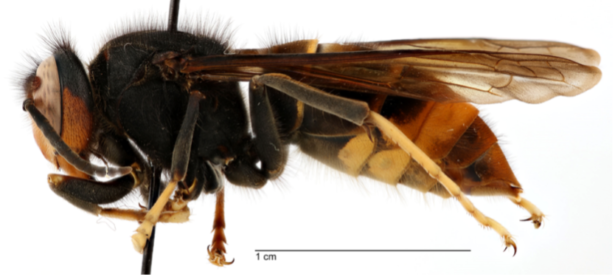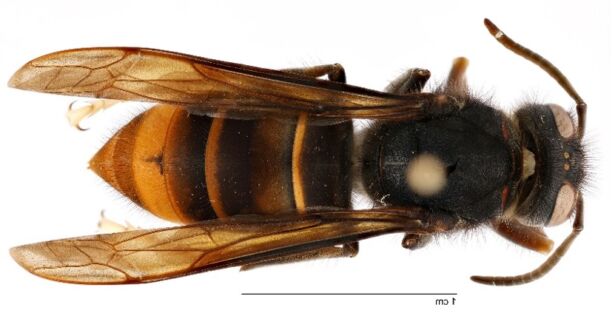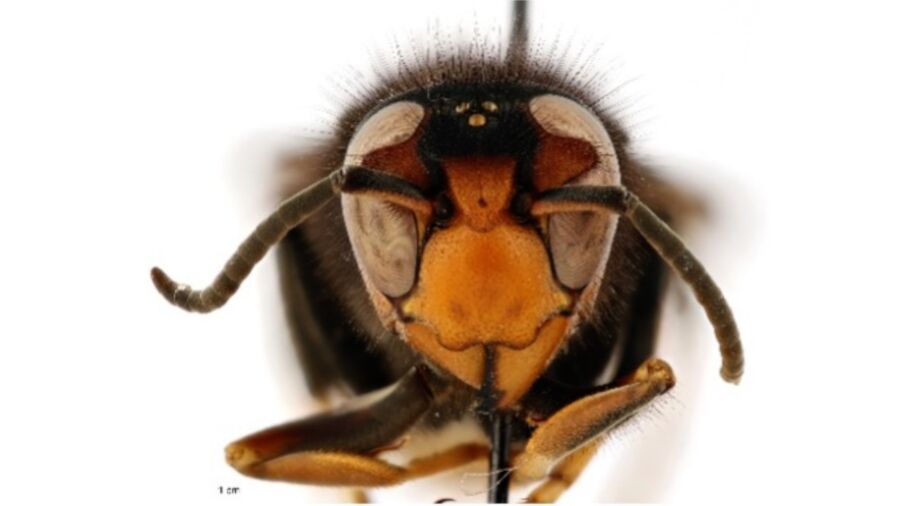Scientists from the Georgia Department of Agriculture (GDA) said they’ve detected a live specimen of an invasive yellow-legged hornet species for the very first time in the United States.
The agency, in coordination with the U.S. Department of Agriculture (USDA) and the University of Georgia (UGA), announced in a press release on Aug. 15 that a beekeeper in Savannah, Georgia spotted an unusual-looking hornet on his property earlier this month and reported it to the GDA, which identified the insect on Aug. 9 as a yellow-legged hornet.
Georgia Agriculture Commissioner Tyler Harper warned at a news conference on Aug. 15 that the invasive species has the potential to threaten honeybees and other native pollinators, which are critical for the agriculture industry.
“This is a significant threat to Georgia agriculture,” Mr. Harper said, adding that if the invasive species does establish in the state, it could threaten agriculture as a whole.
“American farmers grow more than 100 different crops that require pollination,” he said. “USDA estimates that pollinators add over $18 billion in revenue to the U.S. Crop Production every year and roughly one-third of food consumed by Americans comes from food or crops that require pollination. Many of these crops are grown by Georgia producers, they include apples, blueberries, and watermelons just to name a few.”
Mr. Harper encouraged Georgians to document and report hornet sightings to their local extension office or the GDA. However, he also noted that yellow-legged hornets can be dangerous, and scientists advise people to use caution in the event of a sighting.


“Georgians play an important role [in] helping GDA identify unwanted, non-native pests, and I want to thank the beekeeper who reported his sighting to us, as well as our partners at the University of Georgia and USDA’s Animal & Plant Health Inspection Service for working swiftly to confirm its identity,” he said.
“Our experienced team of professionals will continue to assess the situation and are working directly with USDA APHIS and UGA to trap, track, and eradicate the yellow-legged Hornet in Georgia.”
Yellow-Legged Hornet
The yellow-legged hornet has been described by the GDA as a “social wasp species” that is native to tropical and subtropical areas of Southeast Asia. The insect has also established itself in much of Europe, parts of the Middle East, and parts of Asia where it wasn’t native originally.
The insects build egg-shaped paper nests, often above ground in trees, that can become large and host up the 6,000 worker hornets.
Mr. Harper indicated that no nests or colonies have been located, and scientists are unsure how many more of the hornets there could be. The GDA, meanwhile, did not say how long they suspect the insects to have already been in the Peach State.
Dr. Keith Delaplane, a honey bee expert at the University of Georgia, said the yellow-legged hornet is a “voracious predator” of honey bees, but the insect is not considered a threat to humans.
“As far as an epidemiological health risk to Americans—a pretty low risk if you consider data from China. I think the comparable data for the United States; we get about 72 deaths a year from all stinging insects combined,” Dr. Delaplane said. “So this is not a big risk for public health reasons.”
Dr. Delaplane also noted that the yellow-legged hornet is sometimes mistaken for its relative, the Asian giant hornet or often dubbed “murder hornet,” which is another invasive species that was discovered in North America in 2019.

The Asian giant hornet is the world’s largest hornet species, whose queens can grow up to 2 inches in length. However, Dr. Delaplane said yellow-legged hornets are as dangerous to native pollinators as their relative due to their ability to rapidly kill domestic honeybees and other hornet species.
“Its nickname is the bee hawk for good reason,” he said. “They’re very agile. They can swoop down and capture honeybees in the air and from the front of their hives,” the professor continued, noting just several of the invasive hornet species can depopulate native honeybees “over a matter of days.”
The GDA’s next step is to develop a plan to track down and set up traps to eradicate the yellow-legged hornet in Georgia, the agency said. If officials discover a colony through residents’ reporting, the colony will be eradicated.
Additionally, the GDA said that the insect that has already been identified will be analyzed and DNA tested so scientists can determine whether it originated from Europe or Asia.

